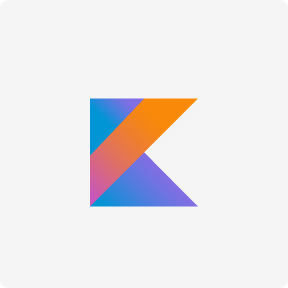One reason this could work is that the interviewer benefits from seeing how someone reacts to questions or what they are saying through their body language, but those things come through just fine through a live VR meeting. I’d love to go to CES from the comfort of my own office and never have to ai implementation visit Las Vegas again. With VR, I could envision being able to have a meeting and even “see” a new product and test it out. It would be more productive for me because I could have more meetings each day, avoid all travel, and even quickly jump out of a meeting that wasn’t quite right for me.

VR technology is certain to continue to improve, bringing our experiences in virtual worlds more closely into alignment with those in the real one. Recent breakthroughs which could have a widespread impact include the emergence of eyeball-tracking technology, allowing us to interact and activate aspects of a simulation merely by looking at them. Further ahead, experiments are already being done with interfacing brainwave activity, potentially allowing us to alter our environment merely by thinking.
How Companies Are Using VR to Develop Employees’ Soft Skills
For example, if someone was looking to add an extension to their property, they can experience the space and what it will look like before it’s physically built and then make real-time changes. This saves the customer and architect time and money, as well as increasing satisfaction on completion of the project. Often the news around VR focuses heavily on gaming but VR and XR are going to shape our future in so many more ways than purely entertainment. From healthcare to real estate, recruitment, and education, this article covers 23 industries already using VR – and this is just the start. The way this type of AI solution works is a technician at the facility, using only a smartphone with an AR app, can point their camera toward the machine while an expert views that image on their own device.
There’s a reason why 75% of the world’s top brands are now using VR technology in their marketing campaigns. Companies like Google, Microsoft, Meta (Facebook), Nvidia, Snap and many others are heavily investing in the metaverse. Virtual meetings eliminate the need for travel, allowing global teams to collaborate as if they are in the same room. Augmented reality (AR) “enhances the real world” by displaying images, text and information on device displays. Pokemon Go is a great example of augmented reality, where the user is seeing new information but is not fully immersed in a scene or alternate reality. VR and AR offer a way to expand your customer base and train your employees more effectively from a distance.
VR and AR: The Business Reality
Its implementation is so convenient for buyers, it’s proven to increase leads by 49% and, on average, helped to sell properties up to five times faster. Apart from gaming and social media, there are a number of ways businesses are using AR today, and the possibilities are endless. One of the main decisions that businesses and individual users have to make when it comes to VR/AR is whether to go for tethered or non-tethered… In the entertainment industry, VR is being used for things like video games, movies, and live events.

While it may not replace all traditional business practices, VR’s potential to transform various aspects of business operations and customer engagement suggests that it will play a significant role in the future of many industries. In a nutshell, virtual reality revolutionizes business operations, from training to marketing, promising cost savings, enhanced customer engagement, and innovative solutions. VR is being used in a number of different industries to create more immersive and engaging experiences.
Virtual reality for small businesses
Glue is another example of a virtual collaboration platform used by many different companies, including Microsoft, Sodexo, and HP. It offers not only collaboration tools but also the ability to create 3D workspaces and immersive VR training venues for its users. Marketing agencies which have prepared themselves to create virtual and interactive experiences for companies and brands also fall into this category and are likely to play an increasingly prominent role in the marketing landscape of the near future. While the benefits and drawbacks of virtual reality (VR) training are still hot topics of debate, the hyper-modern practice has quietly gained a foothold across various industries over the past few years. The Covid-19 pandemic has accelerated this process, making it necessary to attend training in a virtual world when we can’t connect in the physical one.

There are several big players already building social communities in the VR space, including Meta’s Horizon Worlds and AltspaceVR. Horizon Worlds not only enables people to explore virtual worlds together, but they can create immersive content too, including VR spaces specifically for their friends and colleagues. The most well-known application for creating art in VR is Tiltbrush and it’s amazing what some people have managed to paint in it. You can also draw, sculpt, create and animate virtual 3D models and sculptures with Masterpiece Studio. Architects have been using 3D models for years but using immersive tools allows them to understand and explore the space at the deepest level possible.
advantages of using VR in business based on the furniture industry
That is, nurses no longer need to make a few punctures, causing discomfort to the patient. Educators in VR regularly host events in VR on topics including cyberbullying, storytelling, and language learning, which are available to attend in VR or desktop. By bringing people together in VR, attendees can immerse themselves in the topic and virtual space, and build stronger connections with each other compared to events via traditional video conferencing tools. You can put on your headset in London, and meet virtually with your colleagues in New York and Madrid, and connect and work with them as if you were all in the same room.
Unlike the restrictions of classroom-based training, the addition of VR means users can put theory to practice with bespoke training programs that can be played-out as many times as necessary. And with production costs of VR hardware and software becoming more affordable than ever, the implementation of its technology has created limitless opportunities across more sectors than you might’ve realised. Virtual marketplaces like Octopus XR are also gaining momentum in redefining how customers shop online. With Octopus, brands offering VR apps can market and sell their products on an all-in-one platform.
Virtual Training
Of course, the possibilities are endless, and depending on your brand strategy, a bespoke VR experience can be created to immerse your customers like never before. For global brands, the integration of VR has created new and exciting digitally-focused connections with customers. For budget-friendly options, businesses can also set up and create VR apps to help their products standout ahead of the competition at tradeshow events. Because as well as giving new life to business presentations, meetings and sales pitches, VR has become essential kit for over 80,000 job roles in the US alone. In a similar vein, collaboration using VR is also becoming more commonplace in a variety of industries.
- If you’re a fan of cultural activities, you can visit museums such as the Natural History Museum in London or if you’re into sports, you can play golf or football in VR.
- VR is being used in a number of different industries to create more immersive and engaging experiences.
- Other aspects of the virtual environment, like the effect of ocean breezes and the sound of waves breaking and shorebirds, could heighten the experience.
- Lately, I’ve been thinking about this topic quite a bit ever since I tried the Gear VR goggles for several days in a row.
- The company behind this solution has gone as far as incorporating technology to deliver an electric shock to trainees if they make a dangerous mistake – with the aim of simulating fear which officers would naturally feel in the field.
- Much of the hype has largely been around the new and exciting opportunities virtual reality offers to corporate training.
In general, tasks that it can carry out can be split into one of two categories– training, or practical application. At one global pet-food company, VR has helped the sales staff meet “in person,” offer retail customers 360-degree views of its factories, and plan shelf displays with far greater visual detail than they could with spreadsheets. The most prominent players in the entertainment industry decided to take on VR for business audiences to enjoy. For instance, now you can watch Coco VR and go into the virtual world of experiences a business provides. Even though you have to invest in VR technology solutions, you will still gain a decent ROI.
Travel and Tourism: Central Park
It allows attendees to act more naturally, for example looking around the room rather than just at the person speaking, as well as being able to pick up on non-verbal gestures. What’s more, environments can be changed to match the meeting agenda, from traditional boardrooms to more creative spaces such as meeting on the moon. For properties still in the development phase, VR can offer potential buyers or investors a detailed visualization of the finished product, aiding in pre-sales or securing investments. Lacoste’s VR app lets users try on shoes virtually, providing a 360-degree view of how they look on the user’s feet.
Platform & Product Development
Devices like the Samsung Gear VR and Google Cardboard make VR work without the typical sense of nausea. Imagine being able to execute every step necessary to complete a purchase of a product from examining the products and try it to reach satisfaction before you complete the purchasing transaction without leaving your chair at your house. VR is likely to influence your workplace, hobbies and social life in the future – and that’s sooner than you may think. The possibilities of VR are endless; the only things we can’t replace in VR are eating and sleeping… for now.
Art and design
At TeamViewer, one of our solutions is remote virtual assistance and visual instructions enabled by AR. For many of the business leaders I’ve spoken with recently, AR has been the key solution for their equipment repairs during this time. A key benefit of VR as a communications tool is that distractions are minimised. Businesses benefit from more productive and efficient meetings, as attendees are fully immersed into the meeting space, blocking out the physical world with the headset and headphones. In 2020, a consequence of the Covid pandemic has been that profound changes in working environments have been felt keenly by millions of people around the world.